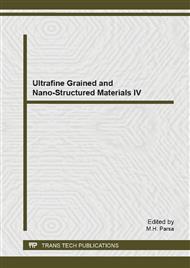p.539
p.544
p.549
p.554
p.559
p.563
p.568
p.572
p.577
Growth of Carbon Nanotube on the Ni-Mesoporous Alumina Catalysts for Use as Adsorbent
Abstract:
Ordered mesoporous materials with high specific surface area and large pore volume have high potential for commercial applications in adsorption and catalysis. In this study, ordered mesoporous alumina (γ-alumina) with high thermal and chemical resistance was synthesized by the sol-gel method using various organic compounds, i.e. aminoacids and carboxylic acids as template. The obtained data showed that γ-Al2O3 produced in the presence of carboxylic acids as template results in very well catalytic activities for CNT growth. The best results obtained using Ni catalysts supported on alumina at a temperature of 900 °C. Since the method and amount of the catalyst deposited on a porous support affects its efficiency in CVD growth of CNT, the above parameters have been also optimized in this work. Alumina supported CNT,s were applied as adsorbent for removal of some organic compounds from aqueous samples. The microstructure, morphology, and chemical composition of the adsorbents were characterized by X-ray diffraction (XRD), Brunauer-Emmett-Teller (BET) and scanning electron microscopy (SEM). Efficiency of synthesized samples for adsorption organic compounds was investigated by high performance liquid chromatography (HPLC) analysis of filtrate. This work showed that, although mesoporous alumina supported CNT can be applied as a good adsorbent for removal of trace amounts of organic compounds from drinking water efficiency of the adsorbents are extremely dependent on the porous adsorbent syntheses condition.
Info:
Periodical:
Pages:
559-562
Citation:
Online since:
November 2013
Authors:
Keywords:
Price:
Сopyright:
© 2014 Trans Tech Publications Ltd. All Rights Reserved
Share:
Citation:


